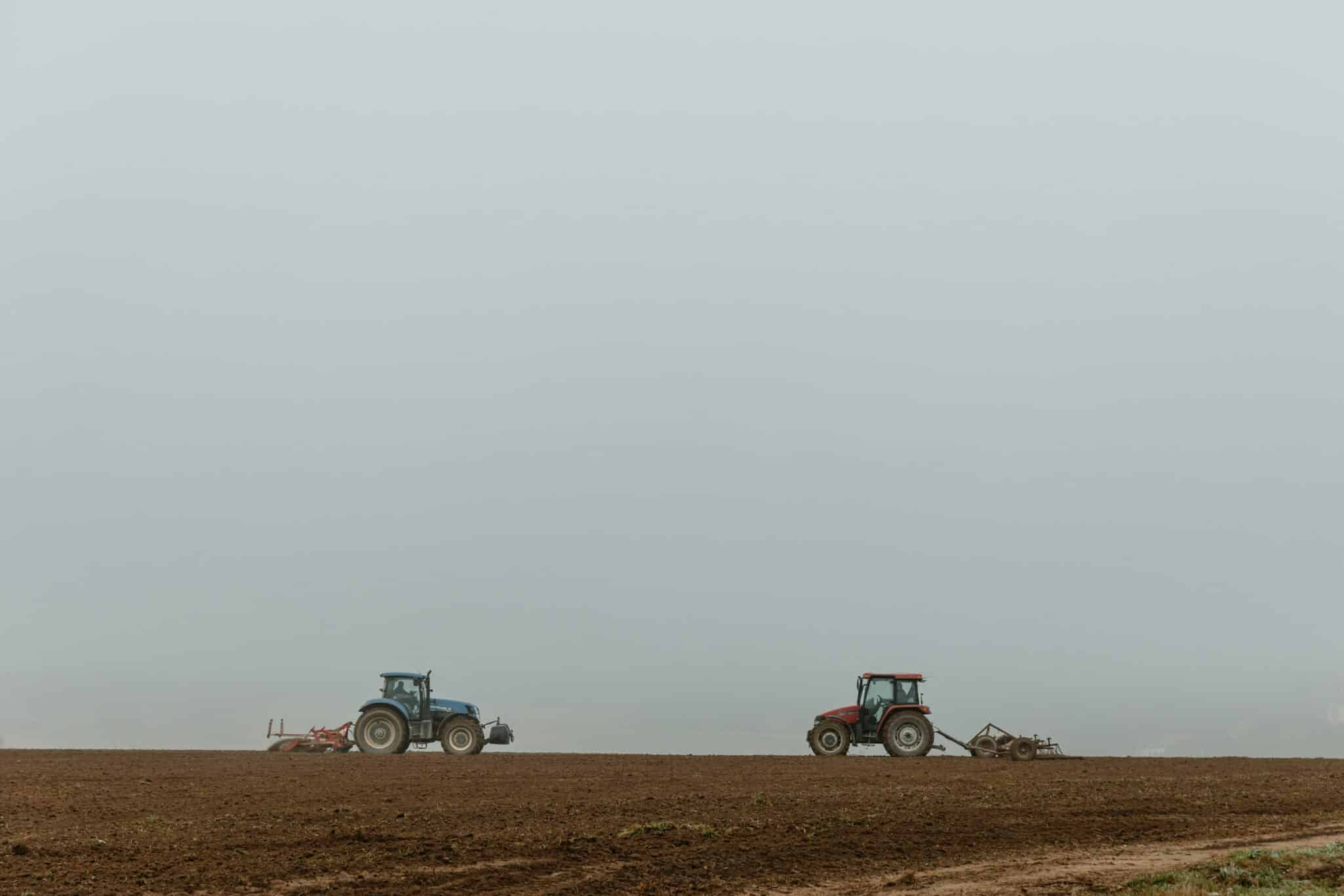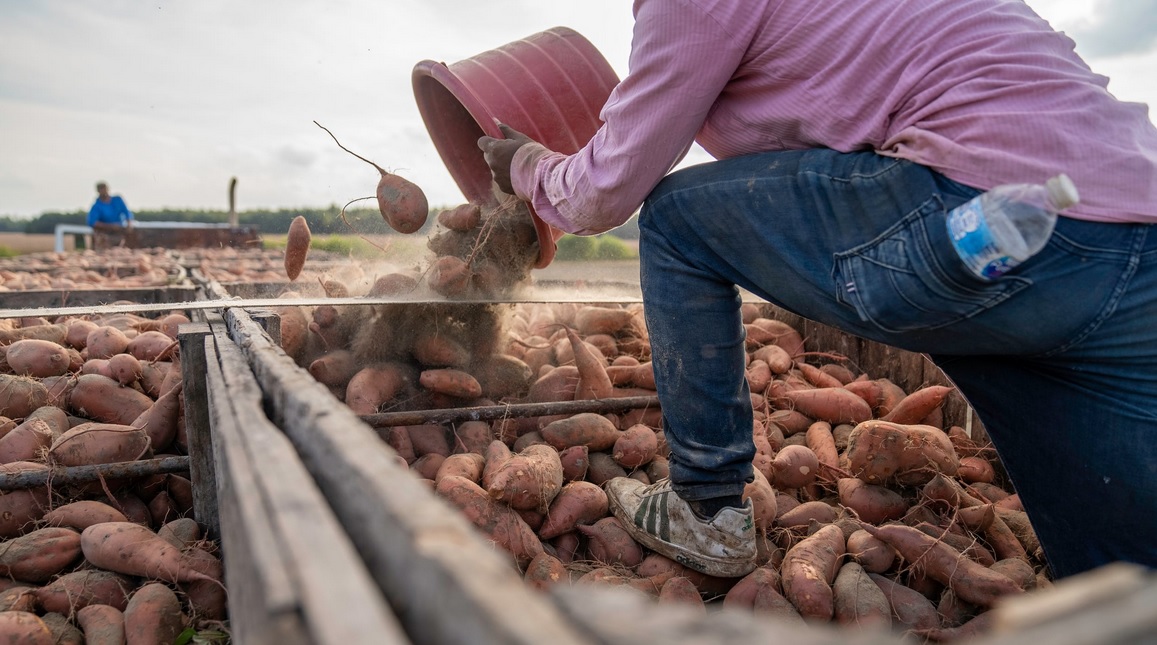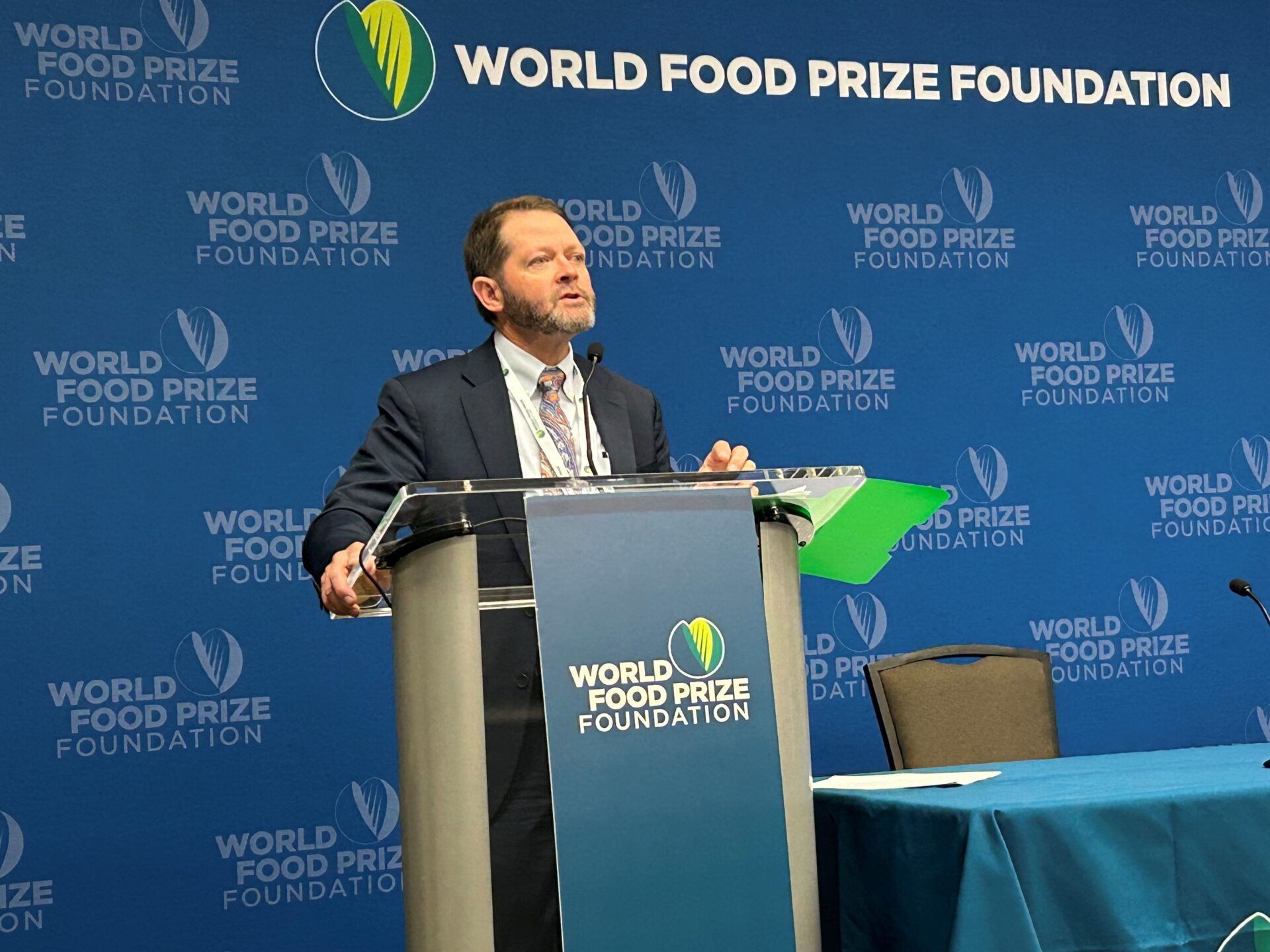Agricultural Films Market Report: A Sustainable Development Goals Perspective
Executive Summary: Market Overview and Alignment with Sustainable Development Goals
The global Agricultural Films market is experiencing significant growth, fundamentally driven by the global imperative to enhance food production in line with SDG 2 (Zero Hunger). As the world population increases, the demand for efficient and modern farming techniques, such as plasticulture, has intensified. This report analyzes the market’s trajectory from 2025 to 2032, projecting a Compound Annual Growth Rate (CAGR) of 5.80%. A critical trend shaping the industry is the increasing alignment with sustainability principles, particularly SDG 12 (Responsible Consumption and Production) and SDG 15 (Life on Land), evidenced by a market-wide shift towards biodegradable and environmentally friendly film options. Technological innovations are further enhancing film functionality, contributing directly to improved crop yields and resource efficiency.
Market Dynamics and SDG Implications
Primary Drivers
- Food Security (SDG 2): The primary driver is the escalating need for high-efficiency farming practices to feed a growing global population. Greenhouse cultivation and other advanced agricultural methods rely heavily on specialized films to protect crops and maximize yield.
- Sustainable Practices (SDG 12 & SDG 13): A rising awareness of sustainable agriculture propels the adoption of biodegradable and eco-friendly films, which helps mitigate plastic pollution and supports climate action by reducing the carbon footprint of farming operations.
Challenges and Restraints
- Environmental Regulations: Stringent regulations concerning plastic waste directly impact the market, challenging manufacturers to innovate beyond traditional plastic-based films. This reflects the global push towards achieving SDG 12.
- Raw Material Volatility: Fluctuating prices of raw materials pose a significant economic challenge to market stability.
- Competition from Alternatives: The market faces competition from alternative, non-plastic materials that may offer a more sustainable profile.
Opportunities for Growth
- Technological Innovation (SDG 9): Significant opportunities exist in the development of “smart films” integrated with technologies for moisture control and solar energy harvesting, promoting innovation and sustainable infrastructure in agriculture.
- Precision Agriculture: The expanding field of precision agriculture creates new applications for specialized films that can improve resource management and crop output, contributing to both SDG 2 and SDG 12.
Market Segmentation Analysis
By Product Type
- High Grade: These films offer superior durability and effectiveness, enhancing crop yields and supporting intensive farming practices aimed at maximizing food production (SDG 2).
- Middle Grade: Representing a balance of performance and cost, these films are widely adopted across various agricultural contexts.
- Low Grade: Economical options with shorter lifespans, often used for temporary applications.
By Application
- Shed Plastic Film: Essential for protecting crops from adverse weather, thereby securing food supplies.
- Mulch Plastic Film: Increasingly popular for its role in weed control and soil moisture retention. This application directly supports sustainable farming by reducing the need for herbicides and conserving water, aligning with SDG 6 (Clean Water and Sanitation) and SDG 15 (Life on Land).
The growing preference for biodegradable films and innovations in solarization techniques underscore the industry’s pivot towards practices that support SDG 12 and SDG 13.
Global Market Landscape and Regional Analysis
The Agricultural Films market demonstrates varied dynamics across different regions, influenced by agricultural advancement, regulatory frameworks, and economic conditions.
- North America: Leads the market due to advanced agricultural practices and high demand for innovative solutions that boost productivity.
- Asia-Pacific: The fastest-growing region, with China and India at the forefront. Growth is driven by increased agricultural production to meet the food demands of large populations (SDG 2) and government support for modern farming.
- Europe: Characterized by a stringent regulatory environment that strongly promotes the use of environmentally friendly and biodegradable materials, directly advancing SDG 12 and SDG 13.
Opportunities for market expansion are particularly strong in the Asia-Pacific and Latin American regions, where the need to enhance agricultural output sustainably is a key driver of innovation and investment.
Competitive Environment and Strategic Developments
The market features several key players who are increasingly differentiating themselves through sustainability-focused innovation.
Key Market Players
- British Polythene Industries (BPI)
- Trioplast
- Berry Plastics
- Armando Alvarez
- Agriplast
- JIANYUANCHUN
Industry leaders like BPI and Berry Plastics are focusing on eco-friendly and biodegradable film solutions to meet the rising demand for sustainable agricultural practices. Emerging companies such as Agriplast are gaining market share by specializing in biodegradable products that align with global environmental goals. The industry-wide shift towards bio-based materials, driven by legislative pressures and consumer awareness, is compelling all market participants to invest in research and development for alternatives that support a circular economy and contribute to SDG 12.
Future Market Forecast and Strategic Outlook (2025-2032)
The Agricultural Films market is projected for sustained growth, contingent on its ability to address key sustainability challenges. The future of the market will be shaped by innovations in biodegradable materials and the integration of smart technologies. To capitalize on growth opportunities, stakeholders must prioritize the development of eco-friendly products that enhance agricultural efficiency while minimizing environmental impact. Navigating risks such as raw material price fluctuations and anti-plastic sentiment will require strategic adaptability and a firm commitment to advancing the Sustainable Development Goals, particularly those related to food security, responsible production, and climate action.
Analysis of Sustainable Development Goals in the Article
1. Which SDGs are addressed or connected to the issues highlighted in the article?
- SDG 2: Zero Hunger: The article directly connects the use of agricultural films to the need to feed a “rising global population.” The primary function of these films is to “enhance crop production” and achieve “improved crop yields,” which are central to ensuring food security.
- SDG 8: Decent Work and Economic Growth: The article is a market analysis report, focusing on the economic aspects of the agricultural films industry. It discusses market size, value (“several billion dollars”), projected growth (“CAGR of 5.80%”), and the role of the industry in enhancing “productivity in agriculture,” all of which relate to economic growth and productivity.
- SDG 9: Industry, Innovation, and Infrastructure: The text highlights the role of “innovations in technology” in improving film quality and functionality. It specifically mentions the “development of smart films integrated with technologies like solar energy harvesting and moisture control” and “advancements in nanotechnology” as key drivers, reflecting a focus on industrial and technological upgrading.
- SDG 12: Responsible Consumption and Production: A major theme in the article is the shift towards sustainability. It repeatedly mentions “biodegradable and environmentally friendly options,” “sustainable agricultural practices,” and “eco-friendly films” as responses to “growing sustainability concerns” and “stringent environmental regulations.” This directly addresses the need for more sustainable production patterns and waste reduction.
2. What specific targets under those SDGs can be identified based on the article’s content?
-
SDG 2: Zero Hunger
- Target 2.4: By 2030, ensure sustainable food production systems and implement resilient agricultural practices that increase productivity and production, help maintain ecosystems, and progressively improve land and soil quality. The article describes how mulch films support sustainable farming through “weed control and soil moisture retention,” which are resilient practices that increase productivity.
-
SDG 8: Decent Work and Economic Growth
- Target 8.2: Achieve higher levels of economic productivity through diversification, technological upgrading and innovation. The article states that the market is driven by “high-efficiency farming practices” and innovations that lead to “enhanced productivity in agriculture.”
-
SDG 9: Industry, Innovation, and Infrastructure
- Target 9.4: By 2030, upgrade infrastructure and retrofit industries to make them sustainable, with an increased adoption of clean and environmentally sound technologies and industrial processes. The industry’s “shift toward biodegradable and environmentally friendly options” and the development of “bio-based materials” is a clear example of retrofitting an industry to become more sustainable.
- Target 9.5: Enhance scientific research, upgrade the technological capabilities of industrial sectors in all countries. The article points to ongoing innovation, noting that companies “innovate and invest in research and development for sustainable alternatives” and are developing “smart films.”
-
SDG 12: Responsible Consumption and Production
- Target 12.2: By 2030, achieve the sustainable management and efficient use of natural resources. The use of mulch films for “soil moisture retention” contributes to the efficient use of water, a key natural resource in agriculture.
- Target 12.5: By 2030, substantially reduce waste generation through prevention, reduction, recycling and reuse. The “growing preference for biodegradable films” and the industry’s focus on “biodegradable film solutions” directly address the goal of reducing plastic waste from agricultural practices.
3. Are there any indicators mentioned or implied in the article that can be used to measure progress towards the identified targets?
-
For SDG 2 (Target 2.4):
- Implied Indicator: Agricultural Productivity (Crop Yields). The article repeatedly mentions “improved crop yields” and “enhance crop production” as the primary benefits of agricultural films. This serves as a direct measure of progress in agricultural productivity.
-
For SDG 8 (Target 8.2):
- Direct Indicator: Rate of Economic Growth. The article provides a specific metric for market growth: “The Agricultural Films Market is projected to exhibit a CAGR of 5.80% during the forecast period.” This is a direct indicator of economic growth within this sector.
-
For SDG 9 (Target 9.5):
- Implied Indicator: Investment in Research & Development. The article states that legislative changes and environmental awareness are “prompting many companies… to innovate and invest in research and development for sustainable alternatives.” The level of this investment would be an indicator of progress.
-
For SDG 12 (Target 12.5):
- Implied Indicator: Share of Sustainable Products in the Market. The article highlights a “shift toward biodegradable and environmentally friendly options” and a “growing preference for biodegradable films.” The market share of these sustainable products compared to traditional plastic films would be a key indicator of reducing potential waste.
4. Table of SDGs, Targets, and Indicators
| SDGs | Targets | Indicators |
|---|---|---|
| SDG 2: Zero Hunger | Target 2.4: Ensure sustainable food production systems and implement resilient agricultural practices that increase productivity. | Improved Crop Yields: The article states films are used to “enhance crop production” and achieve “improved crop yields.” |
| SDG 8: Decent Work and Economic Growth | Target 8.2: Achieve higher levels of economic productivity through technological upgrading and innovation. | Market Growth Rate (CAGR): The article projects a “CAGR of 5.80%” for the market, indicating economic growth and productivity. |
| SDG 9: Industry, Innovation, and Infrastructure | Target 9.5: Enhance scientific research and upgrade technological capabilities. | Investment in R&D: The article notes that companies “innovate and invest in research and development for sustainable alternatives.” |
| SDG 12: Responsible Consumption and Production | Target 12.5: Substantially reduce waste generation. | Market Share of Sustainable Products: The article identifies a “growing preference for biodegradable films” as a key trend, implying a shift in production away from traditional plastic. |
Source: openpr.com







